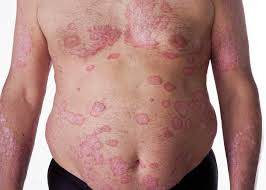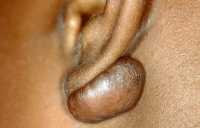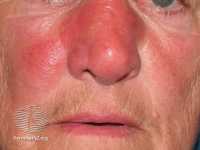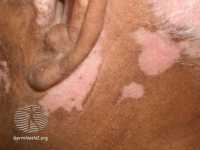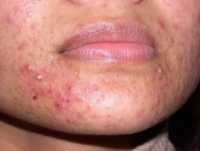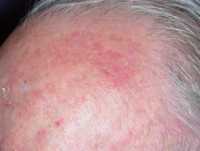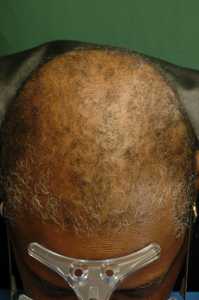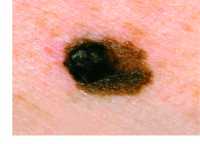- Are unable to tolerate the pain of conventional intra-lesional injection, as keloids are inherently hypersensitive. The problem is exacerbated by the fact that repeated monthly injections are required to achieve a response. In addition, children cannot tolerate pain and cannot undergo such injections.
- Have keloids on the mid facial region, where injection carries a risk of causing blindness.
- Are unable to afford the time and cost of repeated travelling to see a dermatology doctor or nurse for the injections. These include patients residing or working overseas.
- Have mid-sternum protrusive scars after cardiac arterial bypass surgery, and painful injections may trigger another heart attack.
A Painless Heat Patch May Help Resolve Warts
Most Patients with Cellulitis May Not Need IV Antibiotics
Past and Present Smoking Raises Risk of Dermatology Surgery Complications
Some Physicians Who Advise FDA Later Form Financial Relationships with Pharmaceutical Companies
Vitiligo: Off Label Topical Calcineurin Inhibitors Help Some Patients
Novel Bactericidal Gel Offers Promise For Antibiotic-Resistant Acne


Laser Microscope Can See and Treat Skin Without Cutting Into It


How Much of Your Sunscreen is Absorbed?
Are Overweight or Obese Adolescents More or Less Prone to Acne?
Microbiome in Early Adolescent Acne Changes Over Time
Pediatric Melanoma Risk Increasing in Adolescents & Young Adults, Including in Non-Whites
Contact Allergic Reactions to Implanted Cardiac Devices
Psoriasis: No Difference Found in Cardiovascular Risk Between Ustekinumab vs TNF Inhibitor Therapy
Adult Atopic Dermatitis Linked to Anxiety and Depression, Often Undiagnosed
Port Wine Stain Birthmarks in Infants Safely Treated Without Need for General Anesthesia
Actinic Keratosis: What is the Best Treatment for Pre-Skin Cancers?
Oracea® Capsules + Soolantra Cream Effective for Inflammatory Rosacea
- The ANSWER study, a 12-week, randomized, multicenter, Phase 4, Phase 3b in Canada and Europe clinical trial, is the first study of its kind to compare the efficacy and safety of combination therapy with Oracea® (doxycycline, USP) 40 mg Capsules + Soolantra® (ivermectin) Cream, 1% versus Soolantra® (ivermectin) Cream, 1% monotherapy in 273 adults with severe papulopustular rosacea (IGA 4) at clinical trial sites in the United States, Canada and Europe (Czech Republic, Poland, Hungary and Germany).
- Results showed the combination therapy with Oracea Capsules + Soolantra Cream was well tolerated and effective with a faster onset of action than Soolantra Cream given as monotherapy. Key highlights of the study include:
- The mean reduction in percentage of inflammatory lesions from baseline to Week 12 was significant with combination therapy compared to monotherapy (80.29% vs. 73.56%, respectively; p=0.032).
- 5 times as many patients taking combination therapy achieved 100% clearance of inflammatory lesions by Week 12 compared with monotherapy (17.8% vs. 7.2%, respectively; p=0.006).
- Over 2 times as many patients taking combination therapy achieved 100% clear (IGA 0) by Week 12 compared with monotherapy (11.9% vs. 5.1%, respectively; p=0.043).
- Combination therapy was generally well tolerated and no discontinuation of treatments due to side effects.
Lipomas: Deoxycholic Acid (Kybella®) Can Shrink Tumors Before Removal
African American Patients with Psoriasis at Even Greater Risk of Atherosclerotic Heart Disease
Superficial Radiation Therapy For Non-Melanoma Skin Cancers in the Elderly
- This retrospective study reviewed medical records of patients with biopsy-proven, primary cutaneous basal and squamous cell carcinoma (BCC and SCC) lesions on the lower extremities. These patients were treated with the Sensus Healthcare’s Superficial Radiation Therapy SRT-100 Unit between 2011 and 2014. The SRT-100 is most amenable for treating non-melanoma skin cancer (NMSC) in patients aged 65 and older although many younger patients are treated as well when a non-scarring method is desired.
- The types of skin cancers treated included superficial, well differentiated and moderately differentiated squamous cell carcinomas, squamous cell carcinoma in situ and basal cell carcinomas including infiltrative basal cell carcinomas. Higher energy linear accelerator radiation units have been reported to have a high incidence of healing problems. With the SRT-100 the radiation is concentrated primarily in the higher layers of the skin where the skin cancer is located and thus the treatments are well tolerated.
Mutations Linked to Scarring Hair Loss in African American Women Identified
Lilly Announces Phase 3 Results for Atopic Dermatitis Treatment
Melanoma Rates Stable in Australia but Rising in US
Skin Care Products Make Cotton Fabrics More Flammable
Safety of MRIs in Patients with Tattoos
MedicalResearch.com Interview with:
Dr. Martina Callaghan PhD Head of Physics & Senior Lecturer Wellcome Centre for Human Neuroimaging Institute of Neurology University College London London
MedicalResearch.com: What is the background for this study? What are the main findings?
Response: As mirrors the situation in the general population, we found that an increasing number of volunteers who were seeking to enter cognitive neuroscience studies at our Centre had tattoos. However, the magnetic fields used in magnetic resonance imaging (MRI) pose a potential safety risk for people with tattoos. A number of case reports have described such incidents. However, as these describe isolated cases retrospectively, there was not enough information to objectively assess the risk of tattoo-related adverse reactions for persons having an MRI scan. Therefore, in 2011, we decided to embark upon this first prospective study to quantitatively assess this risk.
(more…)
